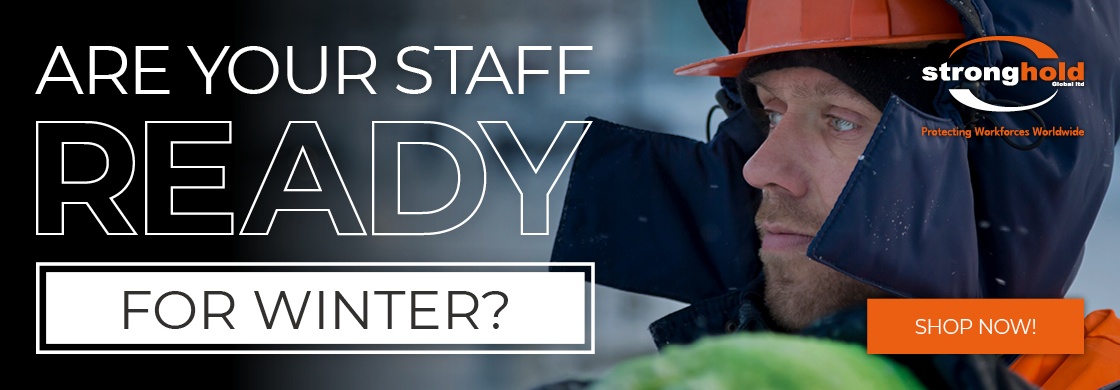
“It’s the most wonderful time of the year”… or so the saying goes. Except, this might not always be the case for those working outdoors. This particular weather season presents unique challenges, potential hazards, and additional risks for employees working outdoors. As temperatures start to drop and winter approaches, the time to get your winter gear ready is now.
What are some of the challenges for outdoors workers?
While businesses should be aware of hazards throughout the year, they must acknowledge additional dangers during winter. As a result, employees might need to be extra cautious going into the colder months. Below are some risks that can become more dangerous as the temperatures drop.
Slips, trips and falls
While slips, trips and falls happen all year round, there is an increased risk of workers getting injured during winter. Whether it’s ice or snow, slippery or wet surfaces, slips and trips can happen both indoors and outdoors. Furthermore, using heavy equipment or driving vehicles requires extra caution during winter as these could spin out of control, causing harm to employees. According to the HSE Statistics, in 2020/21, slips, trips and falls accounted for the most common non-fatal injuries within Great Britain, accounting for 33% of all accidents.
How to avoid slips, trips and falls during winter:
- Ensure there is enough lighting on-site, especially in potential risk areas.
- Wear footwear that is suitable on wet and slippery surfaces. For example, our V12 Defender Waterproof Safety Boot and High Leg Waterproof Sympatex Safety Boot are perfect safety boots for the winter.
- Monitor areas to identify wet, icy, or slippery surfaces, then use signs to mark these hazards accordingly.
- Advise your employees to walk slowly and carefully on icy patches when working on-site. Here’s our brown rock salt, ideal for minimising slips and trips.
- Avoid carrying heavy loads that might compromise your safety.
Poor visibility
The likelihood of dark, wet, and/or foggy weather conditions increases the risk of poor visibility, resulting in more accidents and injuries. According to the HSE Statistics, in 2020/21, being struck by a moving object accounted for 4,410 non-fatal injuries and 18 work-related fatalities.
It is recommended that high-visibility clothing should be worn at all times to limit the risk of injury. It is also advised that employers should invest in lighting for high-risk areas such as those close to machinery. Lighting will increase employee visibility and assist employee safety by keeping them attentive and awake.
Cold Stress
Any worker exposed to cold air temperatures might be affected by environmental cold, putting them at risk of Cold Stress. As the wind speed increases, the low air temperature feels much colder, which can increase the risk of Cold Stress to exposed workers such as firefighters, construction workers and farmers.
Various factors can cause Cold Stress. For instance, heavy wind speed can cause heat to leave the body quickly. In addition, wetness or dampness, even from body sweat, also facilitates heat loss. Cold Stress typically occurs when the body cannot warm itself due to internal body temperature, resulting in severe cold-related illnesses such as hypothermia, frostbite, trench foot and chilblains.
Under the 1970 Occupational Safety and Health Act, employers must protect their workers from recognised hazards that can cause harm in the workplace. Therefore, we recommend the following:
- Employers should train their staff to identify any symptoms or dangers that can lead to Cold Stress.
- Employees are provided with the appropriate clothing.
- Monitoring your employee’s physical condition.
- Encourage layering workwear to provide adequate warmth.
What extra precautions should I take during winter?
Often, working in cold environments can’t be avoided; workers should take precautions to prevent Cold Stress and injuries while working. For example:
- Wear enough layers of clothing and protect your ears, face, hands and feet by wearing appropriate hats, gloves, and boots. (read our blog for more information on layering here).
- Limit your time spent outdoors by taking breaks in warm locations and scheduling certain jobs during the warmer parts of the day.
- Pay attention to signs and symptoms and monitor yourself/ employees consistently.
What can I do to ensure my staff are safe during the coldest days?
You can incorporate several extra precautions for winter protection, like investing in lighting on-site and stocking up on winter supplies such as de-icing salt. According to HSE.gov, below are some practical ways of managing a cold environment:
- Ensure the protective equipment your employees are using is appropriate for winter.
- Provide mobile facilities for warming up and encourage the drinking of warm fluids such as soup or hot drinks
- Encourage frequent breaks
- Schedule work according to the weather conditions, and consider delaying the work if needed.
- Educate workers about recognising the early symptoms of cold stress
How can Stronghold Global help?
At Stronghold Global, we offer a wide range of winter products perfect for team and site safety. So, contact us today for your winter workwear, site supplies, and lighting. Give us a call at 01793 484237 or email [email protected], and we can help you prepare for this winter!




![stronghold global logo[94]](https://www.strongholdglobal.com/wp-content/uploads/2022/03/Stronghold-Global-Logo94.png)





